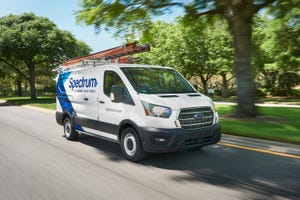Surprise! AT&T Markets 4G Advances as '5G Evolution'
Meet the new G, same as the old G!

Well, c'mon, you knew this was gonna happen right? AT&T is marketing upgrades to its 4G LTE network as a "5G Evolution."
The updates will be available to Samsung Corp. S8 and S8+ users in Austin, Texas from today. AT&T promises to light up 20 major metro areas with this evolution by the end of 2017.
Now, the S8 is the cutting-edge 4G LTE-Advanced phone of the moment, but it sure ain't a 5G phone. How do I know? Well, the 5G radio specification ain't ready yet, and won't make it into commercial handsets until mid-2019 at the earliest. (See Qualcomm: First 5G Smartphones Coming Mid-2019.)
No, these upgrades could be more properly marketed as "Gigabit LTE," although even that might be a bit much since most users won't see anything like 1-Gbit/s down speeds out of their nice new handsets. Nonetheless, AT&T did message earlier this year that it would update some cell sites to hit theoretical peaks of 1-Gbit/s this year. (See AT&T Lays Out 5G Plans & More for 2017.)
Want to know more about 5G? Check out our dedicated 5G content channel here on
Light Reading.
The technical flapdoodle behind all this involves a symbiotic relationship between the 4G handset and network to achieve data speeds in the hundreds of megabits a second. This includes 4x4 antenna arrays on the phone and the network, bonded radio channels and upgraded 256 QAM modulation support. (See Samsung Galaxy S8 to Kickstart 'Gigabit LTE' Race in US for more.)
T-Mobile US Inc. and Sprint Corp. (NYSE: S) are undertaking similar upgrades on their LTE networks to boost end-user speeds. There should be around eight Android devices available this year that can glimpse such Gigabit LTE speeds.
To be fair, it is a neat network upgrade for users buying the latest Android smartphones, and should add additional capacity for older handsets too. It's just not 5G yet, nor is it clear that potential customers even know -- or indeed care -- what "5G" is yet anyway.
Nonetheless, we've been here before. Back in 2010, I christened the 3G networks being sold as "4G" by US carriers as "fauxG." Given the tenor of the times, maybe 4G being marketed as 5G can be called "alt-G" or fakeG?"
I don't know yet. Make your suggestions below!
— Dan Jones, Mobile Editor, Light Reading
About the Author(s)
You May Also Like




_International_Software_Products.jpeg?width=300&auto=webp&quality=80&disable=upscale)







